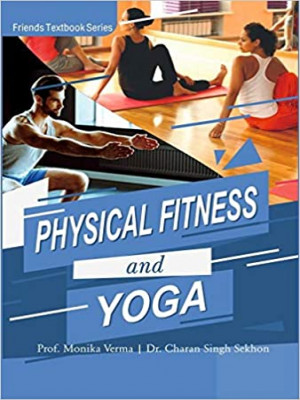
These are some tips to help you prepare for your first yoga class. This first tip relates to what to wear to class. Your instructor will be happy to address any concerns or questions you may have if you are a first-time student. The first variant should be used if you're anxious or have physical limitations. You can also listen to your body and take rests if necessary. You don't need to be discouraged by your yoga teacher. It's natural to want more and to push yourself further.
Next, prepare for your yoga class. For beginners, arriving 15 minutes early will give you enough time to find a place to sit and find the bathroom. Also, you'll have plenty of time to familiarize yourself with the classroom before class begins. Nerves can transfer to the mat if you hurry into class. Many new students report feeling anxious before their first class of yoga. This stress is only increased by being late.
The next tip relates to clothing. Although most people will be wearing yoga tops and pants while practicing, they shouldn't be too tight. It should allow for free movement and absorb sweat. If you're new to yoga, be sure to drink lots of water before class. Water will flush out toxins, and aid you in your practice. It is important to avoid eating before class. This will ensure that your practice is as safe as possible.

Make sure that you have fun in your classes. If you're comparing yourself to others, it can lead to ugly feelings. Your yoga class should be a time for you to feel good about your body, and your breath. Do not compare yourself to others, or think about how they are doing it. Instead, be kind and respectful of yourself. Yoga can be a great way to start if you're a beginner. You can practice different postures until one suits you.
Another tip: Be punctual. It doesn't matter where you are studying, it is important to be on time for your yoga classes. You'll often feel rushed and annoyed when the class is crowded. You can still practice your yoga as often as possible, even if it's not possible to make it in time. When you're preparing for your yoga class, you should have the correct equipment and clothing for the class.
Don't rush into the middle of a yoga class. After you finish, take your time. This is the most important part of any yoga class. Even though the first class is a significant milestone, it's important to keep practicing as long as possible. Yoga's cumulative effects can be a reason for this. This is because the benefits of yoga are cumulative.
The first couple months can prove to be the hardest for someone new to yoga. Yoga practice isn't easy. It is important to be patient with yourself, your body, and yourself. Do not try to push yourself too much. It will take a while for your body to adapt to your practice, so you should be patient. You should also wear clothing that allows you to move freely. You'll find that you can do all the poses you like after a few weeks.

Respect the teacher. You have signed up for this class in order to be removed from your daily life. It must be kept silent. Although you might be tempted leave your phone at home or to lock it in your locker, please don't interrupt your teacher. It will only hurt you and other people. For those who are new to the practice, there are many things you can do to make it more enjoyable.
The best time to do yoga is in the morning. The sun is shining and you're fresh. If you aren't used to practicing yoga, begin with the simplest poses. This will help build your confidence and get you used to the movement. For those who have never tried yoga, you can start by learning a simple nursery rhyme. Then, you'll be more comfortable and your yoga practice will last longer. This will give you a head start.
FAQ
How many calories per day should I consume?
The exact amount varies depending on the person. An average person needs 2000-2500 calories per day. It's important to assess your life style, gender, age and height in order to determine how much calories you need.
Are there any benefits to practicing yoga?
Yoga has been around since ancient times, and it has recently gained popularity. Celebrities, as well as everyday people who are looking to stay fit and healthy, have made yoga a hugely popular choice.
Yoga is great because you can stretch your muscles and strengthen them. Yoga can also help calm your mind and relax you.
The main difference between yoga and other forms of exercise is that yoga focuses on breathing techniques.
To improve your balance and flexibility, you can try different poses.
How Metabolic Health is Key to Aging Well
People live longer today than ever before. However, people are getting sicker as they live longer. Our current medical science approach is not working, even though we've made many advances.
We have to change how we see health and aging. For healthy aging, it is important to look at metabolic well-being - not just weight reduction but overall wellbeing.
To live a full and active life, your metabolism should be healthy all your life.
The good news is that there are many ways to improve your metabolic health. You can improve your metabolic health by incorporating these 7 foods in to your diet.
-
Resveratrol has been proven to increase cellular longevity. They also contain antioxidants and vitamins C & E.
-
Beans such as pinto beans and lentils provide excellent fiber and plant protein. These nutrients help to keep blood sugar levels constant so they don't spike and crash.
-
Broccoli contains the antioxidant sulforaphane. This has been shown in studies to protect DNA. It may even be able to slow down cancer progression.
-
Chia Seeds contain high levels of fiber and omega-3 fat acids. They are rich in protein and antioxidants. All of these nutrients can promote heart health and brain function as well as gut health.
-
Green tea contains catechins, which are polyphenols. Green tea catechins have been shown to reduce bone fractures, heart disease, cognitive decline, diabetes risk, and other health issues.
-
Salmonis a great source of lean protein. It is low in saturated fat and high in vitamin D.
-
Walnuts contain omega-3s and antioxidants like alpha lipoic acid (ALA). ALA is an antioxidant that protects against inflammation. It also boosts energy production.
Which dietary supplement is good for weight loss?
Exercise and diet are key to losing weight. Some people find certain supplements helpful.
A few studies have suggested that omega-3 Fatty Acids might help weight loss. Omega-3s are essential fats which are crucial for brain function. They can be found in seafoods like salmon, tuna or shrimp, as well as cod liver oil.
Research suggests that green tea may be beneficial in weight loss. Green tea is rich in catechins, antioxidants which may boost metabolism and aid weight loss.
How often should I exercise each week?
It all depends upon how much time you have and what type or exercise you prefer. An average guideline is to do moderate-intensity aerobic activity 3 to 5 days per semaine. It is important not to overdo it. To get the best results from your exercise, it is important to be consistent.
Which exercises are best for me?
It all depends upon your fitness goals. Some people are more focused on endurance activities such as running, cycling and swimming. Others enjoy lifting weights or using resistance bands. There are many types and styles of exercise available today. Find the best option for you.
Do I have to exercise every single day?
No! No! This could be walking fast enough so you feel slightly out breath or cycling hard enough to sweat.
Do Men Need A Gym Membership?
A gym membership does not have to be required for men. However, your money will be more valuable if you join a gym.
Most gyms offer free trial members, which allows you to use the facilities without paying anything.
The gym is open to all, and you don't have to pay anything. It's easy to cancel your membership when you decide whether or not you love the gym.
Statistics
- By John Thompson Take a whopping 38% off a set of PowerBlock Pros. (menshealth.com)
- Candidates and applicants must pass all four tests at 70% (minimum level) to graduate from Basic Deputy U.S. Marshal (BDUSM) Training. (usmarshals.gov)
- According to the American Academy of Dermatology (AAD), men over 50 are at a heightened risk of developing it. (healthline.com)
- 10 pounds in a month is likely during a lean bulking phase, especially for beginners. (muscleandstrength.com)
- The PRS enabled risk stratification for overall prostate cancer and lethal disease with a four-fold difference between men in the highest and lowest quartiles (HR, 4.32; 95% confidence interval [CI], 3.16-5.89). (pubmed.ncbi.nlm.nih.gov)
External Links
How To
What is the healthiest food for men?
Men should eat five meals a day of fruits, vegetables and other healthy foods. They also need to limit red meat consumption and avoid fast foods.
Antioxidants are found in fruits and vegetables, which protect against cardiovascular disease and other diseases.
Vegetables include broccoli, cauliflower, carrots, spinach, tomatoes, peppers, cucumbers, lettuce, mushrooms, etc.
Beans and peas have high fiber and protein.
A great source of omega-3 fatty acid is nuts and seeds. Essential for hormone production and brain function, omega-3 fatty acids are vital.
Another good source of omega-3s is fish. Fish has more mercury than other meats. However, fish liver oil does contain fewer toxins.
Normal growth and development are possible with the help of Omega-6s in vegetable oils like soybean, safflowers, sunflowerseed, cottonseed, and corn oils.
Poultry provides a lot of lean meat. Chicken breast is one the healthiest meats.
Lean beef has low levels of cholesterol and saturated fats. Consuming too much red meat can increase your chance of getting prostate cancer.
Avoid sausages and hot dogs. These foods contain added nitrates, which can lead to cancer.
It's obvious that exercise is vital for your overall health. What if you already exercise regularly? Is there any other way to improve or maintain your physical health?
Yes, it is! You can do several things to make sure you get the most out of your workouts. These are some ways to make your workouts more enjoyable.
Take it slow. Injure yourself if your first session is too intense. You can start slowly increasing your intensity by starting at a comfortable pace.
Stretch before and afterwards. Stretching helps loosen tight muscles, reduce muscle soreness, and improve flexibility. You can stretch sitting down, standing, or moving around.
Cool down. This is especially important when you are doing cardio exercises. To ensure that you don't become tired, your body needs to have time to recuperate between sessions. Cool down by walking slowly, taking deep breaths or going for a swim.
Hydrate. Drinking plenty of fluids helps keep you hydrated and reduces muscle cramps. Water is the ideal drink, but sports drinks can also help.
You must eat right. You should eat enough calories every day. Regular meals throughout the day will help keep you energized and focussed during your workouts.
Get enough rest. You'll wake up feeling refreshed and ready to start your next workout when you sleep properly. Sleep is also crucial for repairing damaged tissues.